Wyandotte chickens, renowned for their sturdiness and adaptability, are a popular choice for poultry enthusiasts. These birds boast various characteristics, including a docile temperament and a wide range of colors and types. With a lifespan of around 6-12 years, Wyandottes typically weigh between 6-8 pounds for hens and 8-10 pounds for roosters. Their striking Silver Laced variety is particularly eye-catching. Known for their moderate egg production, Wyandotte hens lay brown eggs with a rich flavor.
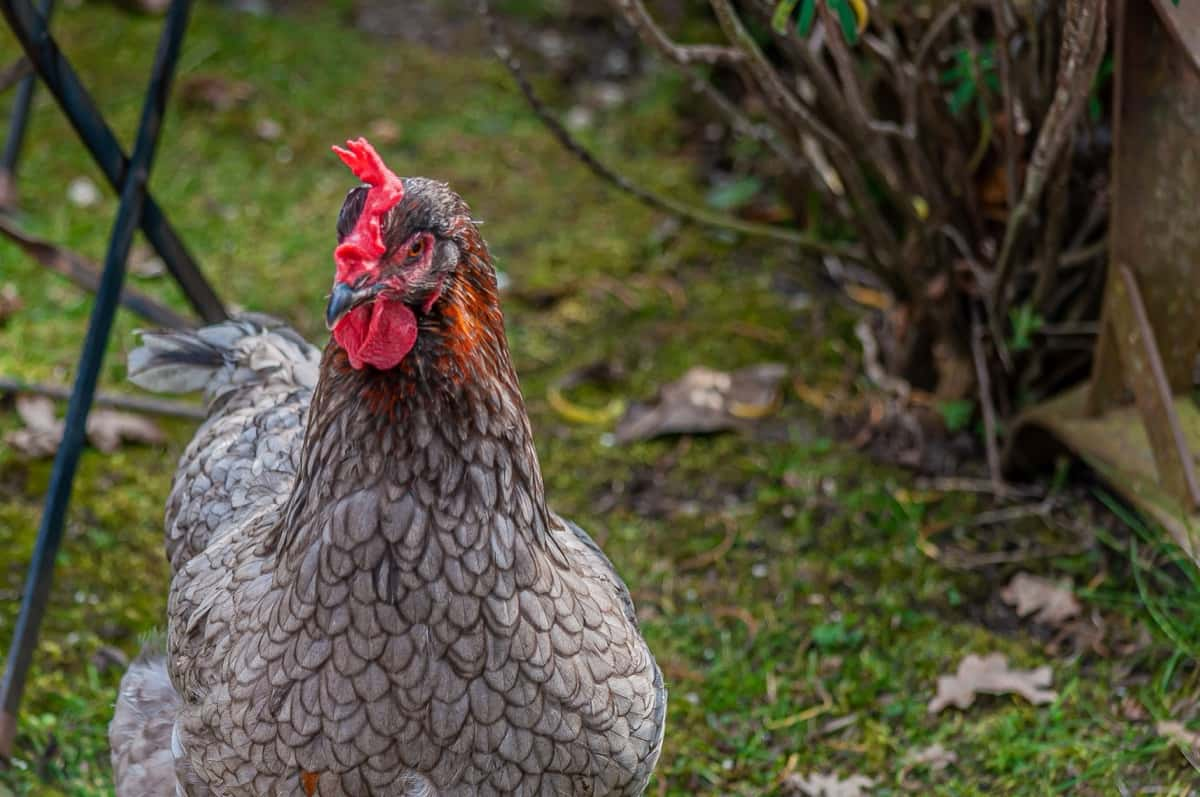
When considering purchasing Wyandotte chickens, reputable breeders or hatcheries are recommended. Proper care, including a balanced diet, appropriate coop design, and regular health checks, ensures the well-being of these birds. Sustainable practices such as breeding and molting management contribute to long-term Wyandotte chicken health and productivity, especially during winter months. With this comprehensive guide, you’ll be equipped to raise Wyandotte chickens successfully while promoting sustainability on your farm.
Wyandotte Chickens: Breed Overview, Advantages, and Origin
Wyandotte chickens are a popular breed of backyard poultry that originated in the United States in the late 19th century. They are known for their hardiness, productivity, and beauty. Wyandotte chickens are medium-sized birds with compact, sturdy bodies, broad chests, short backs, and well-rounded abdomens. They have yellow legs and feet with four toes each, a small rose comb, and wattles less prone to frostbite.
The average weight is 6-9 lb (2.7-4 kg), and height is 16-18 inches (40-45 cm). The average lifespan is 6-12 years, depending on health, care, and environment. These hardy birds can tolerate various climates and conditions, making them a healthy and hardy choice for poultry.
How to Raise Wyandotte Chickens
Setting Up Your Chicken Coop
The first step to raising Wyandotte chickens is to provide them with a suitable chicken coop. A chicken coop is a sheltered enclosure that protects your chickens from predators, weather, and disease. It should have the following features:
- A floor area of at least 4 square feet per chicken and a height of at least 4 feet.
- A roosting area with enough space for all your chickens to perch comfortably at night. The roosts should be at least 2 feet off the ground and spaced at least 10 inches apart.
- A nesting area with one nest box for every 4-5 hens. The nest boxes should be lined with soft bedding, such as straw, wood shavings, or shredded paper, and placed in a dark and quiet corner of the coop.
- A ventilation system for fresh air to circulate without creating drafts or moisture buildup. You can use windows, vents, or fans to achieve this.
- A lighting system that provides natural or artificial light for at least 14 hours a day. This will help your chickens maintain their egg production throughout the year. You can use timers or solar panels to control the lighting.
- A feeder and a waterer that is large enough to accommodate all your chickens without crowding or spilling. You should place them in a clean and dry area of the coop and refill them daily.
- A litter system that keeps the coop floor clean and dry. You can use absorbent materials, such as straw, wood shavings, or sand, to cover the floor and rake or replace them regularly.
- A run or a fenced area that allows your chickens to roam freely outside the coop during the day. The run should have at least 10 square feet per chicken and be covered with a net or a wire mesh to prevent predators from entering.
In case you missed it: Ultimate Guide to Raising Brahma Chickens: Care, Feeding, Egg Production, and Breeding
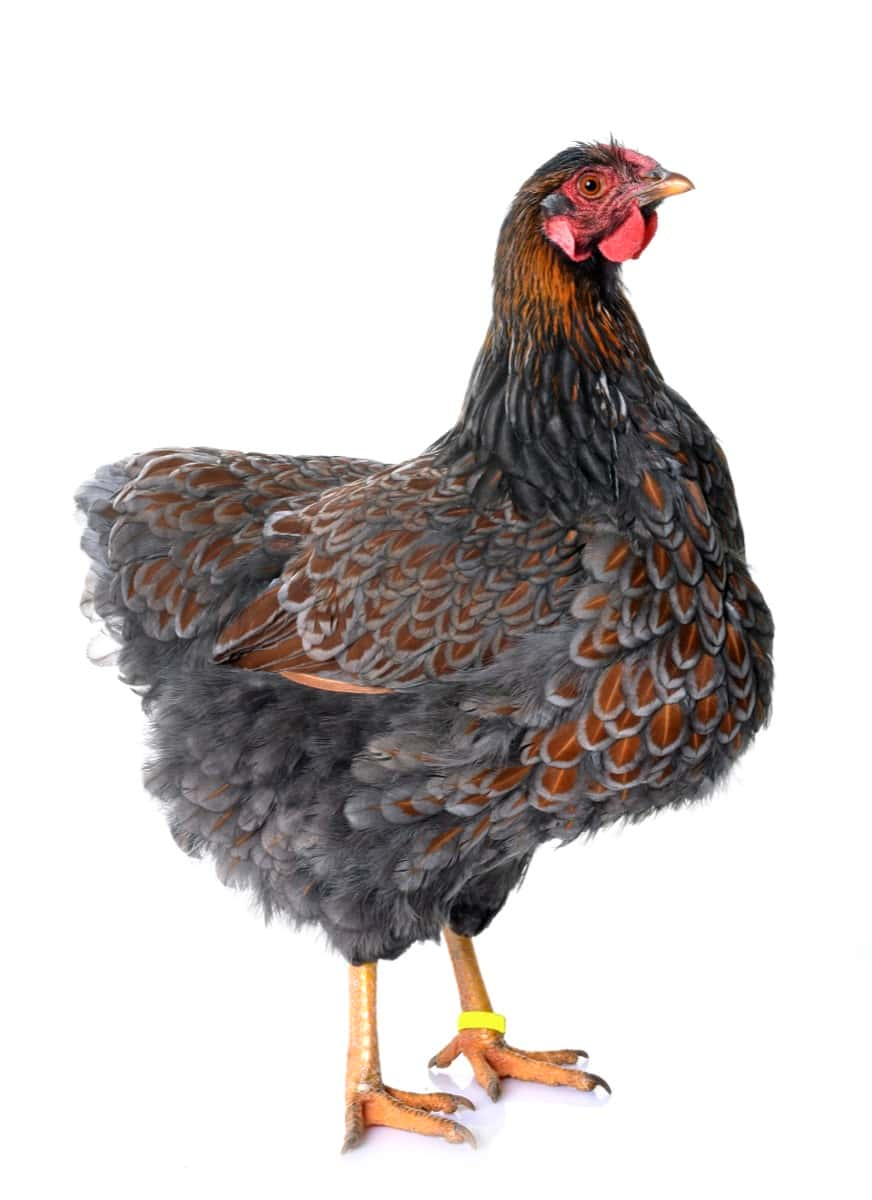
Diet and Nutrition
Wyandotte chickens are omnivorous birds that need a balanced diet of protein, carbohydrates, fats, vitamins, minerals, and water. You can feed them commercially prepared chicken feed or make your own using grains, seeds, legumes, vegetables, fruits, and animal products.
- Starter feed for chicks from hatch to 8 weeks old. This feed has a high protein content (18-20%) to support their growth and development.
- Grower feed for pullets from 8 weeks to 18 weeks old. This feed has a moderate protein content (15-16%) to prepare them for laying eggs.
- Layer feed for hens from 18 weeks old onwards. This feed has a low protein content (14-16%) but a high calcium content (3-4%) to support their egg production and shell quality.
- Scratch feed for all chickens as a treat or a supplement. This feed consists of cracked corn, wheat, barley, oats, or other grains that provide extra energy and fiber. You should limit this feed to no more than 10% of their total diet.
- Grit for all chickens as an aid for digestion. Grit is small pieces of sand, gravel, or crushed shells that help your chickens grind their food in their gizzard. You should provide them with free access to grit in a separate container from their feed.
- Oyster shells for laying hens as a source of calcium. Oyster shells are crushed shells that help your hens produce strong eggshells and prevent egg binding. You should provide them with free access to oyster shells in a separate container from their feed.
Health and Wellness
Wyandotte chickens are generally healthy and hardy birds that can withstand cold weather well. However, they are still susceptible to some common diseases, parasites that can affect their health and performance. You should monitor your chickens daily for any signs of illness or injury, such as:
- Respiratory problems: sneezing, coughing, wheezing, nasal discharge
- Digestive problems: diarrhea, loss of appetite, weight loss
- Reproductive problems: egg binding, prolapse, vent gleet
- Skin problems: feather loss, mites, lice, scaly legs
- Eye problems: swelling, discharge, blindness
- Behavioral problems: aggression, cannibalism, feather pecking
If you notice any symptoms in your chicken flock, isolate it and consult a veterinarian for diagnosis and treatment. Practice good hygiene and bio-security measures to prevent disease and parasite spread. Regularly clean, disinfect the coop and equipment, quarantine new or sick chickens for at least two weeks before introducing them to the flock, a vaccine against common diseases like Marek’s disease, Newcastle disease, and infectious bronchitis, deworm chickens every 3-6 months and provide adequate space, ventilation, lighting, and enrichment to reduce stress and boredom.
Egg Production Essentials
Wyandotte chickens are prolific layers that can produce up to 250 eggs per year. Their eggs are large, brown, and have a smooth shell. They usually start laying eggs at around 18 weeks of age and continue until they are 3-4 years old.
Breed: Some Wyandotte varieties are more productive than others. For example, the Silver Laced Wyandotte is known to be a better layer than the Golden Laced Wyandotte.
Season: Wyandotte chickens tend to lay more eggs in spring, summer than in autumn and winter. This is because they are sensitive to daylight length and need at least 14 hours of light per day to stimulate their laying hormones.
Nutrition: Wyandotte chickens need a high-quality layer of feed that provides them with enough protein, calcium, and other nutrients to produce eggs. They also need access to fresh water and supplements, such as oyster shells and grit.
In case you missed it: Ultimate Guide to Raising Leghorn Chickens: Feeding, Breeding, Egg Production, and Care
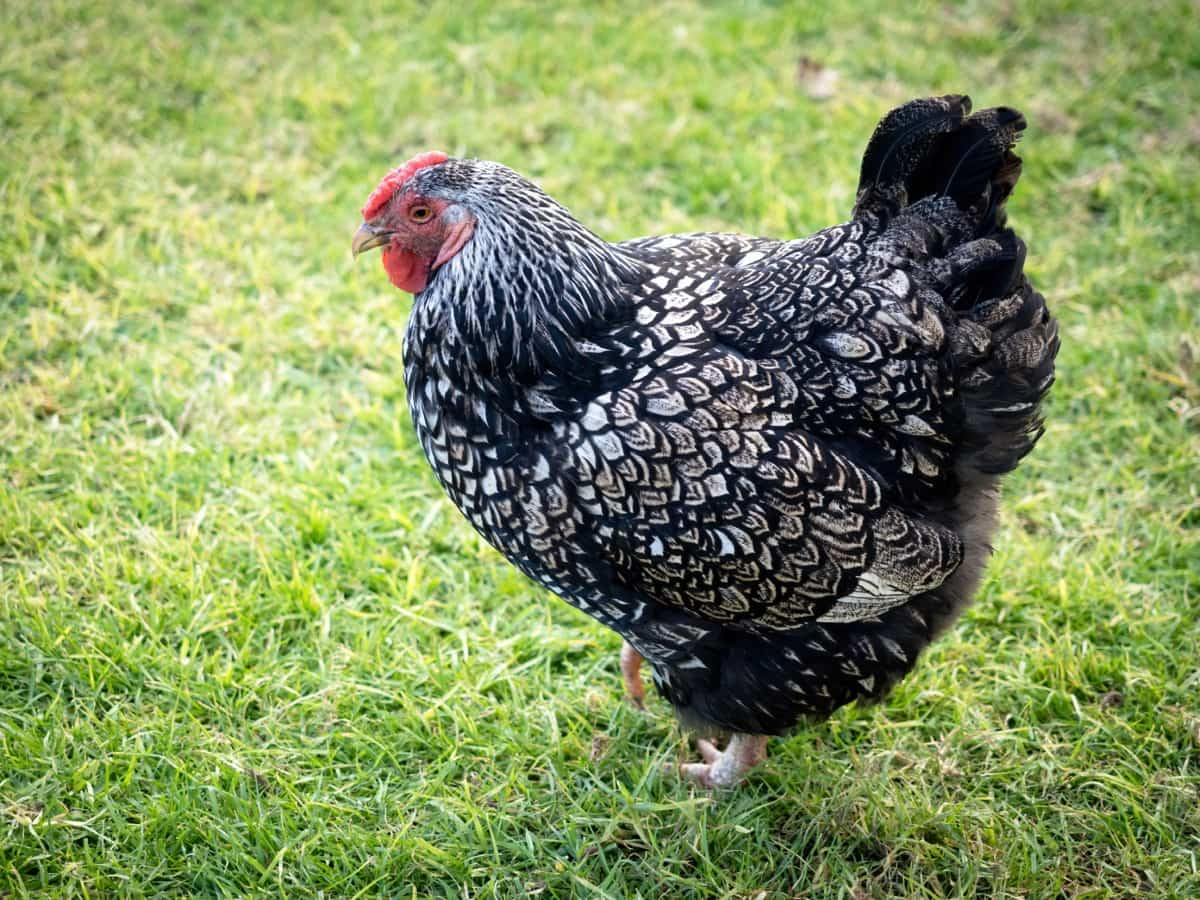
Health: Wyandotte chickens that are sick or stressed will lay fewer or no eggs. It would help if you kept your chickens healthy and happy by preventing and treating diseases and parasites, providing them with a comfortable coop and run, and avoiding overcrowding and bullying.
Age: Wyandotte chickens will lay more eggs in their first year of laying than in their subsequent years. Their egg production will decline gradually as they age until they stop laying altogether.
Breeding Wyandotte Chickens
Wyandotte chickens are easy to breed and hatch. They are naturally broody, which means they have a strong instinct to sit on their eggs and incubate them until they hatch. They are also good mothers who will take care of their chicks until they are independent.
A rooster: You will need one rooster for every 10-15 hens to ensure good fertility rates. It would help if you chose a rooster that is healthy, vigorous, and has the desired color and pattern for your breed.
A breeding pen: You will need a separate pen or coop for your breeding flock to prevent cross-breeding with other breeds or varieties. The pen should have the same features as your main coop but with more nest boxes and privacy for your hens.
A broody hen: You will need a hen that is willing to sit on her eggs for 21 days until they hatch. You can tell if a hen is broody by observing her behavior. A broody hen stay in the nest box most of the time, fluff up her feathers, cluck softly, and peck at anyone who tries to disturb her or her eggs.
Fertile eggs: You will need at least 10-12 fertile eggs from your breeding flock to fill up your broody hen’s nest. You can check the fertility of your eggs by candling them using a flashlight or a candling device. A fertile egg have a dark spot with spider-like veins inside it, while an infertile egg will have a clear yolk.
The Brooding Process
Wyandotte chickens are adaptable and hardy birds that thrive in various environments. However, they require proper care during the brooding process, especially if raised from chicks. A clean, dry, and spacious brooder box with bedding material and a heat source is essential for keeping the chicks warm and comfortable.
The ideal temperature for the first week is 95°F, then 5°F each week until fully feathered. Fresh water and feed are provided at all times, with a high-protein starter feed (18-20%) for the first eight weeks, followed by a lower-protein grower feed (15-16%) until ready to lay eggs. Grit and treats can be offered occasionally. Regular monitoring of the chicks’ behavior and health is crucial, as healthy chicks should be active, curious, and vocal.
If signs of illness are noticed, consult a veterinarian or experienced poultry keeper. Preventing diseases can be achieved by keeping the brooder clean and well-ventilated, and vaccinations against common poultry diseases if necessary.
Handling and Behaviour Management
Wyandotte chickens are docile and gentle birds that can easily get along with other breeds and humans. To foster trust and socialization, gently handle chicks from a young age, talk softly, and offer treats. Establish yourself as the flock leader by being firm but fair, feeding regularly, providing a safe coop, and enforcing rules. Use positive reinforcement, like praise or treats, to reward good behavior and discourage bad behavior.
In case you missed it: How to Raise Buff Orpington Chickens: Guide for Egg Laying, Breeding, and Care
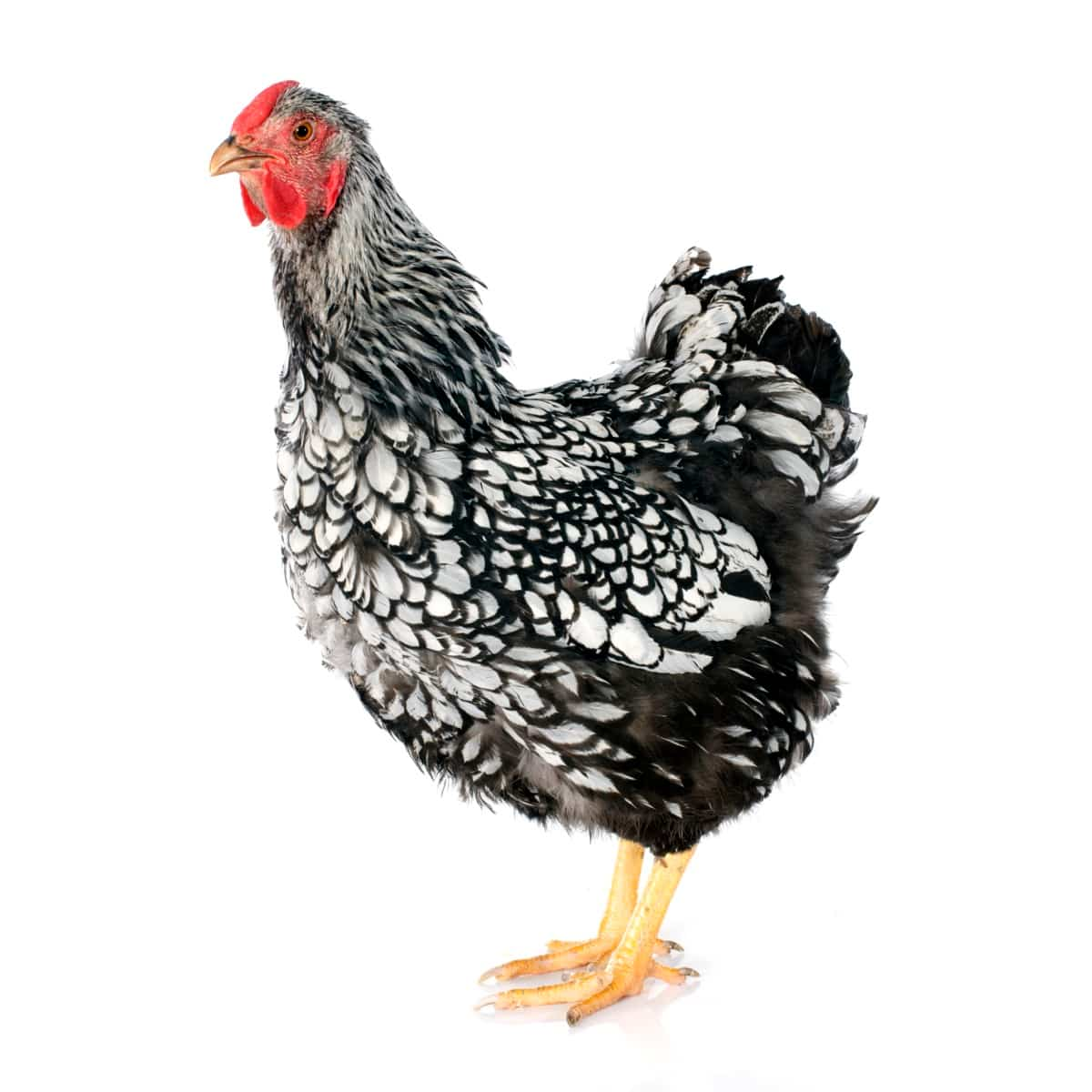
Respect the pecking order of your flock, which is determined by factors like age, size, personality, and breed. Wyandotte chickens are usually in the middle of the pecking order, not too dominant or submissive. To help establish a stable pecking order, provide enough space, food, water, roosts, and nesting boxes, and introduce new birds gradually and carefully.
Seasonal Care Strategies
Wyandotte chickens are adaptable birds with thick feathers for warmth in winter and a rose comb for frostbite prevention. They have yellow skin that reflects heat in summer and a good appetite for body condition. To keep them warm:
- Provide a dry, draft-free coop with extra bedding, fresh water, and immune-boosting ingredients like apple cider vinegar or garlic.
- Increase feed intake by 10-20% to generate body heat and supplement with high-energy treats like corn or sunflower seeds.
- In summer, provide a cool, shady area with misters or fans, plenty of fresh water, ice cubes, or frozen fruits.
- Reduce feed intake by 10-20% to cope with heat stress and supplement their diet with high-water treats like watermelon or cucumber slices. These versatile birds can adapt to different seasons and climates with proper care and care.
Predator Prevention
Wyandotte chickens are vulnerable to predators like foxes, raccoons, hawks, dogs, cats, snakes, and rats. To protect them:
- Provide a secure coop with a solid floor, walls, roof, and door, with a lock or latch that prevents predators from opening it.
- Cover windows or vents with wire mesh or hardware cloth to prevent chewing or turning.
- Attach a fenced and covered run with a wire mesh or hardware cloth floor buried at least 12 inches underground and a wire mesh or hardware cloth roof supported by poles or frames. If free-ranging, provide hiding places or shelters with shade and cover using bushes, trees, rocks, or structures.
- Use scarecrows, decoys, or deterrents like shiny objects, noise makers, or motion-activated sprinklers to scare away predators.
Bio-security Measures
Wyandotte chickens are healthy and resilient birds that can resist diseases and parasites. However, they require bio-security measures to prevent the spread of infections and infestations. Quarantine new birds for 2-4 weeks before introducing them to existing ones and isolate sick or injured birds from rest of the flock. Only mix birds with other flocks or visit poultry farms with proper sanitation.
Clean and disinfect your coop, run it regularly, change bedding material, and wash and sanitize feeders, waterers, roosts, nesting boxes, and other equipment. Check and treat your chickens for parasites like mites, lice, worms, or coccidia using natural remedies or commercial products. Consult a veterinarian or experienced poultry keeper for advice on diagnosis and treatment. Regular cleaning and disinfection of your flock are essential for maintaining a healthy and robust Wyandotte chicken population.
Molting Management
Wyandotte chickens, seasonal layers, stop laying eggs and start molting once a year, usually in late summer or early fall. Molting is a natural process that helps renew their plumage and prepare for the next laying cycle. To manage molting, provide your chickens with extra protein, such as mealworms, fish meal, or meat scraps, to help them grow new feathers faster. Supplement their diet with vitamins, minerals, such as poultry tonic or electrolytes, or offer vitamin-rich treats like fruits, vegetables, or herbs.
Add extra comfort and care during molting, such as extra bedding material or straw bales to keep them warm and cozy. Avoid excessive handling or disturbance, and be patient and supportive until your chickens finish their molting process. By following these tips, you can help your Wyandotte chickens maintain their health and immunity during their molting period.
Record Keeping for Success
Maintaining Wyandotte chicken records is crucial for monitoring their health, productivity, and performance. This can be done using notebooks, spreadsheets, or apps to track information like hatch date, breed, egg production, feed consumption, health issues, weight gain, growth rate, slaughter date, and expenses. This data can help identify problems or opportunities for improvement and help plan for breeding, culling, or expanding the flock.
Wyandotte Hen vs. Rooster: Key Differences
Wyandotte hens and roosters have distinct features that distinguish them. Wyandotte chickens have a rose comb and small wattles, while roosters have larger, redder combs and wattles. Roosters have iridescent feathers and longer sickle feathers on their tails and necks.
In case you missed it: 45 Days Chicken Business Plan: Revenue, Costs, and Profitability Analysis
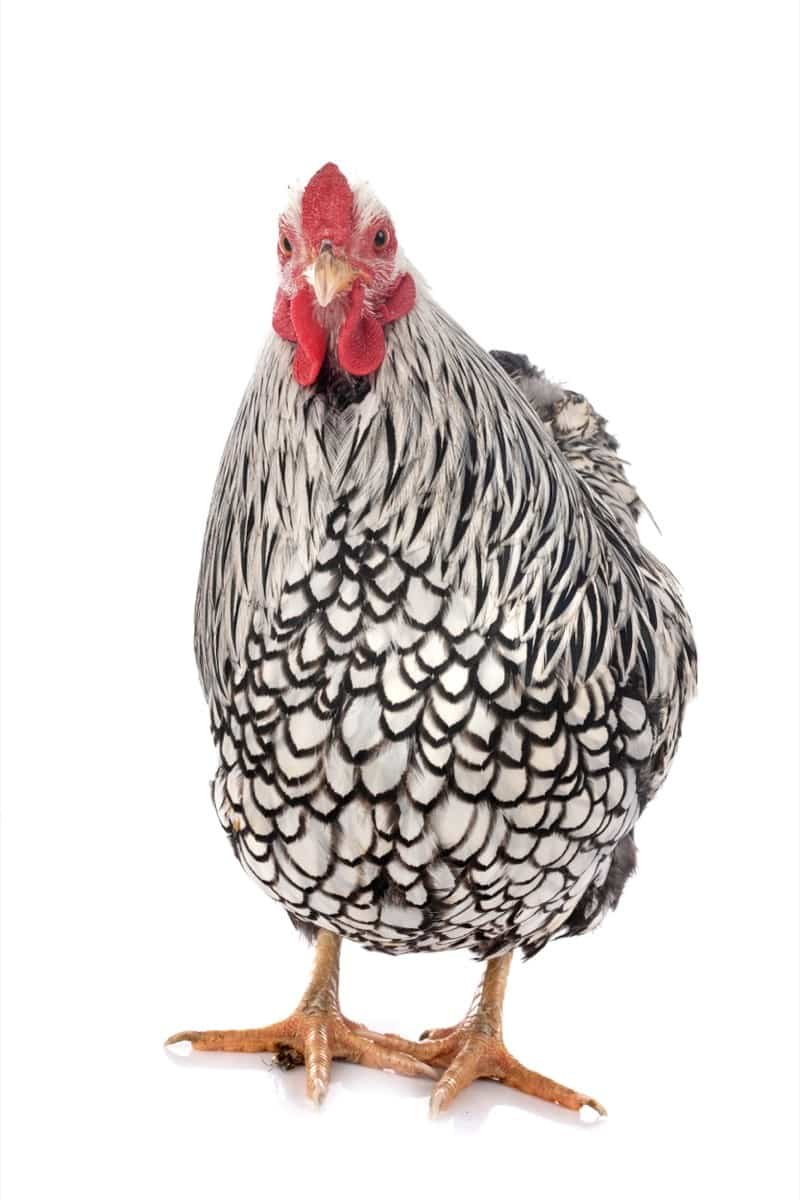
They are medium-sized birds with a round body shape, while roosters are larger and heavier, with an average weight of 9 lb (4 kg) and 6 lb (2.7 kg), respectively. Wyandotte chickens are calm and docile, getting along well with other breeds. Roosters are protective of their flock and may crow loudly to announce their presence, while hens are good layers and may broody occasionally.
Wyandotte Chicken Color Varieties
Wyandotte chickens come in various color varieties, including Silver Laced, Golden Laced, Blue Laced Red, Buff, Black, and Columbian. Silver Laced is the original color variety with black-edged white feathers, while Golden Laced has gold-edged black feathers. Blue Laced Red is a rare variety with blue-edged red feathers, while Buff has light brown feathers with black lacing on the neck and tail. Black has glossy black feathers with green sheen in sunlight, and Columbian has white feathers with black markings on the neck, tail, wings, and legs.
In case you missed it: Pasture-Based Free-Range Chicken Farming: How to Implement for Improving Welfare and Quality
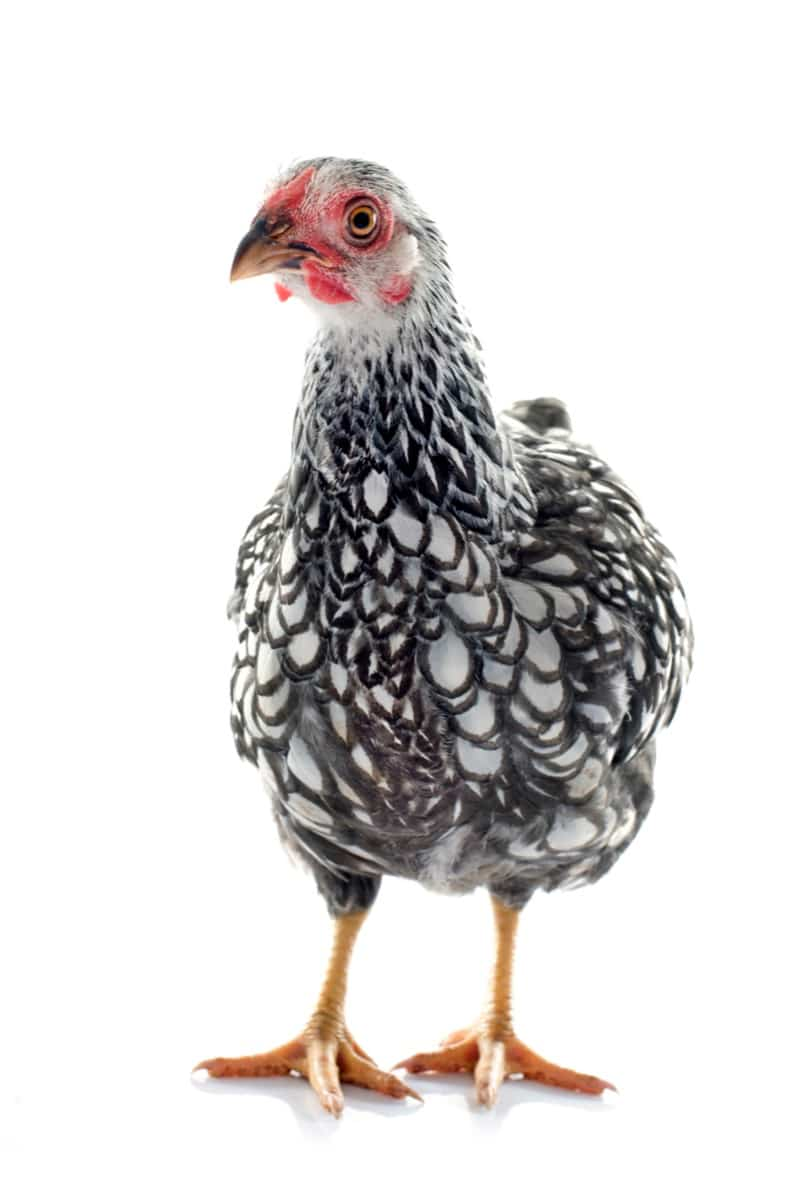
Conclusion
Raising Wyandotte chickens is a rewarding experience due to their hardiness, gentle temperament, and rich history. By providing proper care, nutrition, and attention to their needs, you can enjoy healthy and productive flocks for years to come.
- Types of Pesticides Used in Agriculture: A Beginner’s Guide
- Economical Aquaculture: A Guide to Low-Budget Fish Farming
- 15 Common Planting Errors That Can Doom Your Fruit Trees
- How to Make Houseplants Bushy: Effective Tips and Ideas
- Innovative Strategies for Boosting Coconut Pollination and Yield
- Pollination Strategies for Maximum Pumpkin Yield
- The Complete Guide to Chicken Fattening: Strategies for Maximum Growth
- Natural Solutions for Tulip Problems: 100% Effective Remedies for Leaf and Bulb-Related Issues
- Revolutionizing Citrus Preservation: Towards a Healthier, Greener Future
- Natural Solutions for Peony Leaf and Flower Problems: 100% Effective Remedies
- Maximizing Profits with Avocado Contract Farming in India: A Comprehensive Guide
- Natural Solutions for Hydrangea Problems: 100% Effective Remedies for Leaf and Flowers
- The Ultimate Guide to Choosing the Perfect Foliage Friend: Bringing Life Indoors
- From Sunlight to Sustainability: 15 Ways to Use Solar Technology in Agriculture
- The Ultimate Guide to Dong Tao Chicken: Exploring from History to Raising
- The Eco-Friendly Makeover: How to Convert Your Unused Swimming Pool into a Fish Pond
- Mastering the Art of Delaware Chicken Farming: Essentials for Healthy Backyard Flocks
- 20 Best Homemade Fertilizers for Money Plant: DIY Recipes and Application Methods
- How to Craft a Comprehensive Free-Range Chicken Farming Business Plan
- Brighten Your Flock: Raising Easter Egger Chickens for Beauty and Bounty
- How to Optimize Your Poultry Egg Farm Business Plan with These Strategies
- Subsidy for Spirulina Cultivation: How Indian Government Schemes Encouraging Spirulina Farmers
- Ultimate Guide to Raising Dominique Chickens: Breeding, Feeding, Egg-Production, and Care
- Mastering the Art of Raising Jersey Giant Chickens: Care, Feeding, and More
- Ultimate Guide to Raising Legbar Chickens: Breeding, Farming Practices, Diet, Egg-Production
- How to Raise Welsummer Chickens: A Comprehensive Guide for Beginners
- How to Protect Indoor Plants in Winter: A Comprehensive Guide
- Ultimate Guide to Grow Bag Gardening: Tips, Tricks, and Planting Ideas for Urban Gardeners
- Guide to Lotus Cultivation: How to Propagate, Plant, Grow, Care, Cost, and Profit
- Agriculture Drone Subsidy Scheme: Government Kisan Subsidy, License, and How to Apply Online
- Ultimate Guide to Raising Araucana Chickens: Breed Profile, Farming Economics, Diet, and Care
- Bringing Hydroponics to Classroom: Importance, Benefits of Learning for School Students
- Ultimate Guide to Raising Polish Chickens: Breed Profile, Farming Economics, Diet, and Care
- Ultimate Guide to Raising Australorp Chickens: Profile, Farming Economics, Egg Production, Diet, and Care
- Silkie Chicken Farming: Raising Practices, Varieties, Egg Production, Diet, and Care
- Sussex Chicken Farming: Raising Practices, Varieties, Egg Production, Diet and Care